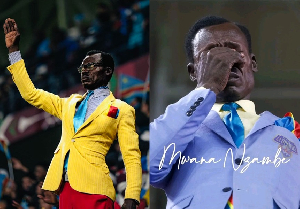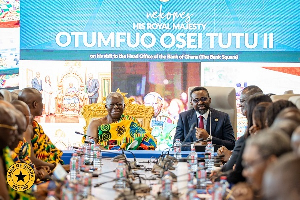By: Kwame Twumasi-Fofie
I happened to be one of the first tenants of the Sunyani Cocoa House, a six-story building, which at the time was the tallest in the whole of Brong-Ahafo Region. That was in 1996, and I was allocated four rooms on the sixth floor. But the only sign of a lift was some wooden crates lying in the yard which the Estate Manager of the place pointed at from a distance and told me they were lifts that were soon going to be installed. On a lighter note, I therefore became part of the history of the first ‘sky-scraper’ in the Brong-Ahafo Region. On a more serious note, however, here was I attempting to operate what was to become the first Games & Amusement Centre in the region on the sixth floor of a building without lift. But I guess that was considered to be quite normal because even later when President Rawlings came to commission the building the lifts were still comfortably in their crates. So I had no option than to accept the situation as it was.
But there was another thing that irritated me in such a way that I couldn’t help but to complain about it to the Estate Manager. It was the pressure of the water supply. His cool response was that since I was on the sixth floor I should understand that what I was getting was the best that was possible. Wow! That was news to me and a real irritation I had to control myself to suppress lest I be labelled ‘too-known’. For here was I, having lived on the 11th of a 24-floor apartment for more than 10 years and enjoying uninterrupted water supply with pressure good enough for a car wash, now being told that on the 6th floor I should not expect to have a good enough water pressure to take a shower. But that is what you get in a country where mediocrity is accepted as normal.
When Are We The First, When Are We Not?
One accolade Ghanaians, especially our politicians, are very proud of is the fact that we are the first country, south of the Sahara, to have gained independence. But wait till you hear a complaint about ‘dum-sor’, erratic water supply or poor roads and see who will come up with statistics of how advanced we are in these areas as compared to our neighbours in the sub-region. In other words, we take comfort and pride in the fact that among the poorest of the poor we are doing better.
Is Sunyani Really a Clean City’?
For so long, Sunyani has been loudly touted as the ‘cleanest city (or regional capital) in Ghana’. For me as a Sunyani resident it’s nice to know that at least there’s no other regional capital cleaner than where I find myself. And perhaps if I were a would-be tourist researching on Ghana with a view to visiting the country Sunyani would be one of the places I would like to visit based on what I must have read about it. But I would like, in all humility, to ask readers who know how clean cities really look like tell me if Sunyani can be counted among them. In other words, does the simple fact that something may not be UGLY necessarily make it BEAUTIFUL? Surely not unless of course we doing an exercise in antonyms. How can a town where sheep, goats and even cattle can freely wander about and leave their droppings behind be said to be clean? In some clean cities that I know people who walk their dogs carry with them plastic sacks with which to scoop the poop of their pets. And in some others it is an offence to litter with chewing gum or cigarette stub, not to talk of water sachet.
Our national capital, Accra, is sadly said to be among the dirtiest cities in the world. Thank God, Kumasi, Takoradi, Tamale etc. are, not as dirty as Accra. But for God’s sake does that mean they are CLEAN? In other words, as compared to which clean towns and cities is Sunyani the cleanest? I’ve had the opportunity to visit all 10 regional capitals and I have no difficulty at all describing Sunyani as the LEAST DIRTY of them all. But unless there are any others which may be rightly described as clean one of them cannot be said to be cleaner than or the cleanest of them all.
Is Every New Thing ‘Ultra-Modern’?
In Ghana every new facility, especially if it’s state-provided, is described as ultra-modern or state-of-the-art. If it is a public gathering place, a school or market a simple provision of a toilet upgrades it into a ‘complex’. Only eight years ago all four stadia made available for the 2008 Africa Cup of Nations were described as ultra-modern and state-of-the-art. Meanwhile, some of them even now do not have adequate parking facilities. Compare them and even our ‘ultra-modern’ Cape Coast Stadium of today to similar facilities elsewhere which may be 30 years older to have a better idea of the standards with which we measure ourselves.
We live in a country where even a minimal threat of rainfall affects TV reception. Meanwhile, the TV sets we use are not made here. Elsewhere in the world there are fast trains suspended in the air; there are long stretches of road and rail networks running through tunnels under mountains; and there are even road and railway lines under the sea connecting different countries. But when we build a three-tier road interchange on a flat surface at Kwame Nkrumah Circle in Accra a government official can get so excited about it to claim that by the time the project is completed the place will be like ‘aburokyire’? Aburokyire indeed!
This, indeed, is what you get when you use mediocrity as your yardstick.
Kwame Twumasi-Fofie
Sunyani
Opinions of Thursday, 7 July 2016
Columnist: Twumasi-Fofie, Kwame














